






Grass seed is relatively inexpensive and covers a large area of prepared soil quickly. Buy the best quality seed so you can benefit from all the latest technology in breeding sturdy, disease-resistant grasses.
Seed mixtures combine several kinds of grasses such as Kentucky bluegrass, tall fescue, and perennial ryegrass in various proportions. Their respective weaknesses offset each other to assure a green lawn all season. Blends, on the other hand, combine several varieties of the same kind of grass, such as three types of Kentucky bluegrass, to provide a uniform look. Local nurseries and garden centers carry formulations appropriate for your region.
The keys to success in growing a lawn from seed are proper timing, good preparation, and aftercare. Fall is the best time to sow cool-weather grass seed. In zones 5 to 7, for example, sow seed around Labor Day to give the grass time to extend its roots deeply into the soil so it can endure the heat of summer.
The healthier the soil, the better the lawn. Prepare the soil two weeks before you sow the seed to allow time to get rid of emerging weeds. Water faithfully and plan to add more seed the following year so your new lawn will be dense and plush.
continue reading belowIn certain regions, the soil is more acid than grass prefers. If you live in such an area, spread dolomitic or granular limestone on the lawn, which takes effect in about 3 to 6 months. Lime is alkaline, so it neutralizes excess acidity, sweetening the soil. Never fertilize and lime a lawn at the same time. The combination produces ammonia gas, releasing the fertilizer's valuable nitrogen into the air.
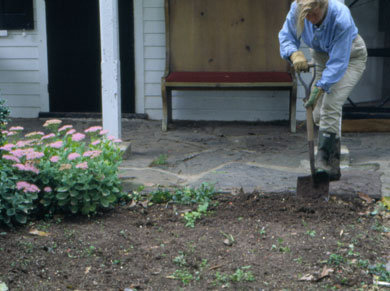 Step 1
Step 1
1. Careful preparation of the soil is critical to the success of a lawn grown from seed. Clear out all vegetation, then dig in some organic material to improve the soil's ability to hold moisture.
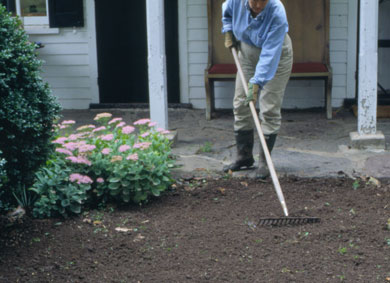 Step 2
Step 2
2. The grass seed must touch the soil, so remove any stones and debris that you find. Using a garden rake, smooth out the soil; be sure to eliminate any dips or bumps.
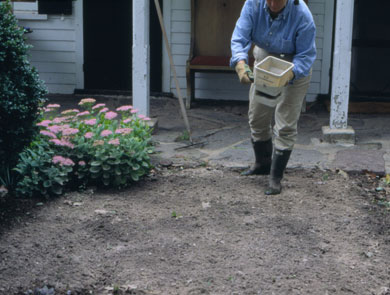 Step 3
Step 3
3. Spread granular, slow-acting lawn fertilizer evenly over the soil. Be sure to follow package instructions for application. The fertilizer provides uniform, consistent nutrition over several months.
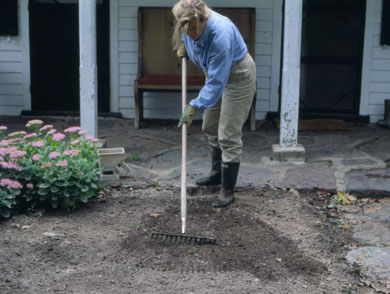 Step 4
Step 4
4. Rake the fertilizer into the soil to rough it up and make a good seed bed. Add water and wait for several days for any newly surfaced weed seeds to sprout and grow. Remove the weeds.
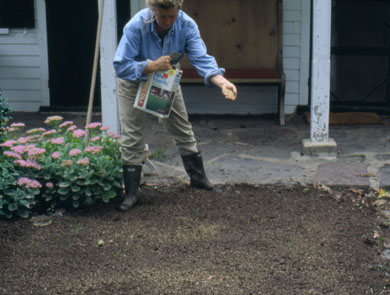 Step 5
Step 5
5. After about a week of weeding, it's time to sow the grass seed, following package instructions. Water lightly to moisten the seed and soil.
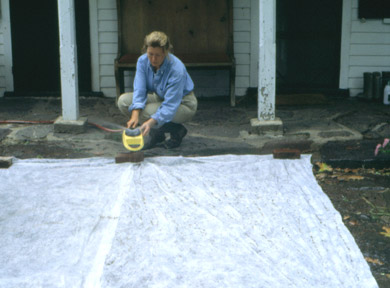 Step 6
Step 6
6. Mulch the newly seeded area to protect the seed. Polyspun garden fabric or straw helps maintain essential moisture in the seed bed.
 Step 7
Step 7
7. For optimum germination, keep new grass seed constantly moist. Seedlings will penetrate straw or push up the light garden fabric as they grow.
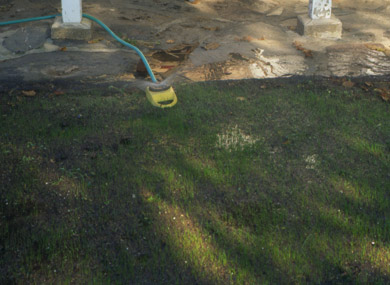 Step 8
Step 8
8. Keep watering, less frequently but more heavily, as roots continue to grow. When the seedlings are 3 inches tall, remove the fabric and lightly mow.
Copyright © www.100flowers.win Botanic Garden All Rights Reserved